|
Here is a picture demostrating the effects of prolonged high air and soil temperatures from a controlled study Brian and I did at Great Lakes Hops Lab . The hops were subject to a minimum temperature of 90 deg. F. - maximum 110 deg. F. regime for three weeks while emerging from dormancy. Photosynthesis pretty much shut down at leaf temperatures above 90 deg., resulting in chlorosis and reduced leaf size on most varieties. Other observations noted were : - Dropping air temperatures below 90 for even 2 hours / 8 hour cycles markedly increase the leaf color. - Soil temperatures above 95 deg stopped fine root hair growth- adding to the chlorosis. - different varieties can tolerate high temperatures better than others Varieties Newport and Challenger both handled the heat well (Didn't even dis-color Challenger). Santiam showed reduced growth, while Spalter Select really took a hit.
Take away -??- The Western European varieties (German) Spalters, Hallertauers, Tettnangers are more sensitive to high air and soil temps than American varieties like Newport, Galena, Chinook, and Cascade. Spalter Select obviously cannot be grown like Newport. This does not mean the former group can't be grown successfully - it means they have to be grown DIFFERENTLY. By "differently" I would suggest closer raised row and plant spacing to create cooler temperatures in the lower hopyard canopy, leaving more lower folige to shade the soil (especially in newly established hopyards), using aerial sprinklers to cool the leaves at mid-day, and mulching new plantings to reduce soil temperatures. I think is is a great example of how "one size does not fit all". 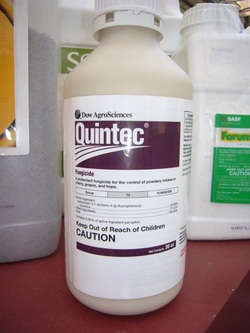 Quintec is a very specific protectant fungicide for the control of powdery mildew. It does not control existing or latent powdery mildew infections so it must be applied before infection conditions happens. (Latent means the mildew is already present in mycelial form in the leaf but not producing the visible white spores yet.) It is very effective in controlling powdery mildew when applied properly. It is compatible with most other pesticides; so it is a good tank mixer. It is currently the best product available for preventing powdery mildew cone infections. Quintec's role in the hop yard is very specific. It is used in rotation (no more than 2 applications in a row, 3X per season) during stages of burr and cone development to stop powdery mildew infection of the cones. Heavily infected cones turn brown and are not very marketable. The rest of the year it sits in the pesticide cabinet - so don't purchase more than you need. Apply the first spray when bur formation is visible and a second spray within two weeks when the burrs are fully sized, but before cone scales develop. The idea is to get the chemical in place before the cone closes up. Applications made after cones form are pretty much ineffective - the disease is shielded inside the cone. Timing is everthing when using this product. It is best used along with an IPM weather forecasting program (like M.S.U.'s) Different varieties of hops develop burrs at different times; so in hop yards with multiple varieties a staggered application , variety by variety, is necessary. Quintec is relatively safe - it only rates a caution on the label. However, it does have a funky restriction about spraying early morning / late evening because of aerial spray mists effects on certain species of bats. Grower Notes: For me, Quintec is one of the critical, must-have IPM sprays. I would drop a lot of other applications of other chemicals out of my IPM program before I missed this one. (Missing it would be equivalent to no control sprays for apple scab in an apple orchard.) It has a large effect on the final quality of the harvested cones. I am very careful not to over-use Quintec, though. Some seasons, weather conditions are not right for powdery mildews to start during burr-out and I will not need to apply it during that critical 2-3 week period. Monitoring the hop yard and weather patterns just before, and during, burr formation help me decide whether it is necessary to apply Quintec. There is a temptation to repeatly spray Quintec just because it works so well. Its mode of action and the quick resistance of powdery mildews makes me be stingy with it's use - I want it to be around and effective for a long time.  There has been a lot of discussion on when, where, and how to prune hops correctly - its a hot topic. I am posting this pic to show the consequence of pruning without taking into account the varietal differences. Variety Nugget- "bull" with no crown buds
This is a 2 1/2 year old Nugget that was cut late fall of 2011 at 1" above the soil line; removing the visible crown buds. Nugget is a hybrid variety that has been selected to produce just a few main primary crown buds; which are formed quite high on the plant stem. It was watered and fertilized normally all throughout the past summer and fall. This pic was taken in the first week of February, 2013. The plant root system has survived intact (didn't increase in size, though). Note there are still no crown buds visible! Will it ever resprout? Not sure - there a nodules forming slowly on the upper roots that may be bud or rhizome primordia. Point to be made is that if a whole hopyard of Nugget were pruned too short; the yield would be drastically reduced for more than one season. This is a review of the actual label and where it could fit into your Integrated Pest Management (IPM) program.
Sonata & Serenade are organic-use approved biologicals (bacterias) that are effective in controlling powdery and downy mildews. The actual label can be viewed at the following : http://www.agraquest.com/agrochemical/products/fungicides-sonata.php Highlights: -low toxicity - 0-day re-entry period to fields -can be applied through drip irrigation -can be used throughout the growing season, 7-14 day effectiveness -compatible with fertilizers and most fungicides - cost effective Applications: The active ingredient is a dormant bacteria which inocculates the field upon appllication. The spray is most effective if it is sprayed when spray droplet evaporation rates are low. Early morning or evening sprays are suggested. The longer the moisture remains; the better the inocculation. Some growers "jump-start" the bacteria by tank mixing with molasses and fish emulsion fertilizer (bacteria tea). Addition of a rainfast spreader-sticker improves performance. Recommended to alternate between Serenade & Sonata for broad-spectrum control. Timing: These biologicals take time to activate and are best applied prior to disease-favorable conditions occurring. Applications of additional fungicides typically don't affect their performance; as they are bacterias, not fungii. Personal note: I use these in our hop propagation process where environmental conditions (warm & humid, wet-leaf conditions) can be optimum for hop diseases like downy and powdery mildews; as well as botrytis, anthracnose, pythium, & sclerotinia to develop. These products are quite effective in controlling disease infection on emerging shoots as well as stopping the infection of new growth. Incidence of other diseases like Botrytis and Pythium are notably reduced. Grower notes:Common Name: Chlordane Trade Names: 1,2,4,5,6,7,8,8-octachloro-3a,4,7,7a-tetrahydro-4,7- methanoindan; Velsicol 1068; Velsicol 168; M-410; Belt; Chlor-Kil; Chlortox; Corodane; Gold Crest C-100; Gold Crest C-50; Kilex; Kypchlor; Niran; Octachlor; Synchlor; Termi-Ded; Topiclor 20; Chlordan; Prentox; and Penticklor.
This group of pesticides can permanently damage your hops and cause a decline in vigor over multiple seasons. (On a side note - the insect growth regulator pyriproxifen - trade name Distance is also very phytotoxic to hops) 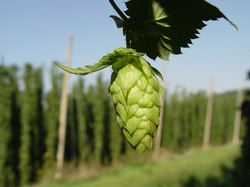 Here are a couple subjects I found that are seldom discussed in articles and forums. I think they can impact your success growing hops. Poor subsoil conditions. Have you done a compaction/perk test? Take a shovel or a post hole digger and walk your site. Dig or auger a series of holes a minimum of 2 feet deep across the site. Check for orange iron banding in the soil which could indicate a seasonally high water table. Do the holes fill up with water? If they do, you may have to install drain tile or sockpipe. Also, note any "hardpan" - soil layers that are so compacted that roots can't penetrate. (If you have difficulty digging through the soil, imagine a plant trying to put a root down into it.) Hardpan is really common in agricultural land that has been field-cropped with tractors for many years. I came across an interesting discussion the other day, whose topic was -Why are German beers so different from their American counterparts? Short answer : Reinheitsgebot! (sneeze!)
Reinheitsgebot is one of the first and oldest consumer protection laws ever passed. It is usually referred to as the German beer purity law and was first proposed in 1487 (no typo!) and passed into law in the year of our Lord 1516. It simply stated that it was illegal to put anything except water, barley, and hops into beer. It was updated and amended into the Provisional German Beer Law which allowed the additions of yeast, wheat malt, and sugar cane (but banned unmalted barley). I constantly wonder what drives this craft brewing revival. Is it just a re-discovery by a new generation - " something old is now is something new"? Is it a inner compulsion to create something that you can take pride in - "I made that"? Is it that desire of little boys to get that mad scientist chemistry set - (and being brave enough to drink the resulting concoction)? What ever it is, it is not a bunch of cheap drunks - in fact the level of sophistication amazes me.
This "trend" seems to be no flash in the pan, and you can quickly see that just by looking at the drop in the big brewers sales numbers. The number of craft brewers is expanding rapidly. Unfortunately, along with all interest in brewing, a few bad things have popped up along the way and you should be aware of them. One of the biggest IMHO is "hop plants for sale"- the topic of this blog. 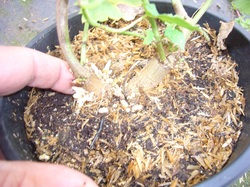 Things are winding down to a slower winter pace at Great Lakes Hops. The hops are settling in for the cold. They are setting their crown buds nicely- I checked them the other day. Heavy buds show the promise of a good up-coming spring season. I plan on insuring a good start to next season by applying a late fall application of fertilizer. This may sound odd - fertilizing a plant that is totally dormant- but it works. As a grower/producer of Hop plants with over 33 varieties in the production schedule, I am inevitably ask to recommend what Hops are the best. That is a loaded question- like; What should be my favorite song? or What should be my favorite beer?
I can't pick the best hop for you, but I can give you a little insight into how to select Hop varieties to grow. Ones that you will like and will grow well in your area. Let's begin by narrowing down the field a bit. You want Hops; not ornamental hops from the local garden center (like Sunbeam), not Japanese Hops (an invasive weed), not Hops grown from seed (could be male or female plants), and not wild hops you found growing in a ditch ('cause you have no idea of their brewing characteristics). You want Hop plants or rhizome cuttings from a reputable source that are disease-free, and are indeed, the variety of female Hop plant they are claimed to be. (There are a ton of secondary sellers of rhizome sticks out there on the Internet that are truly junk; so ask if they are certified producers or who their source is.) |
Details
Blog AuthorLynn, the head hop grower at Great Lakes Hops has over 30 years of experience in the horticultural field. Browse the blog articles here to find useful growing information for humulus lupulus, based on personal experience and observations at Great Lakes Hops. Archives
January 2020
Categories
All
|
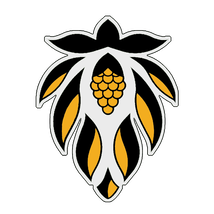
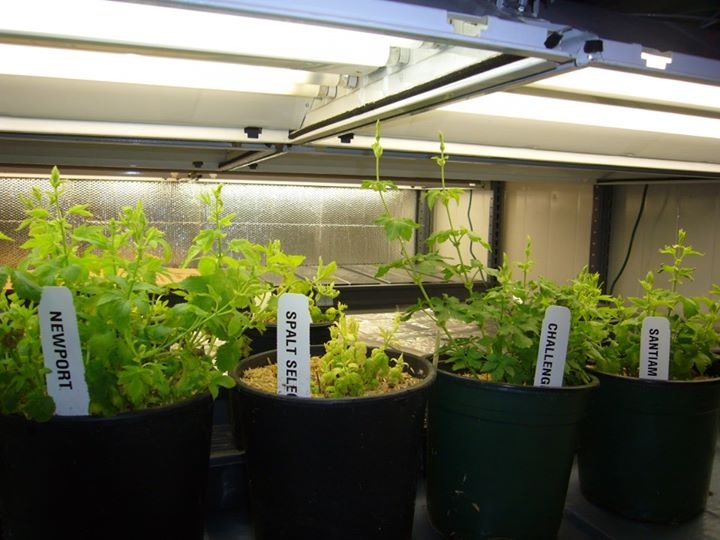

 RSS Feed
RSS Feed